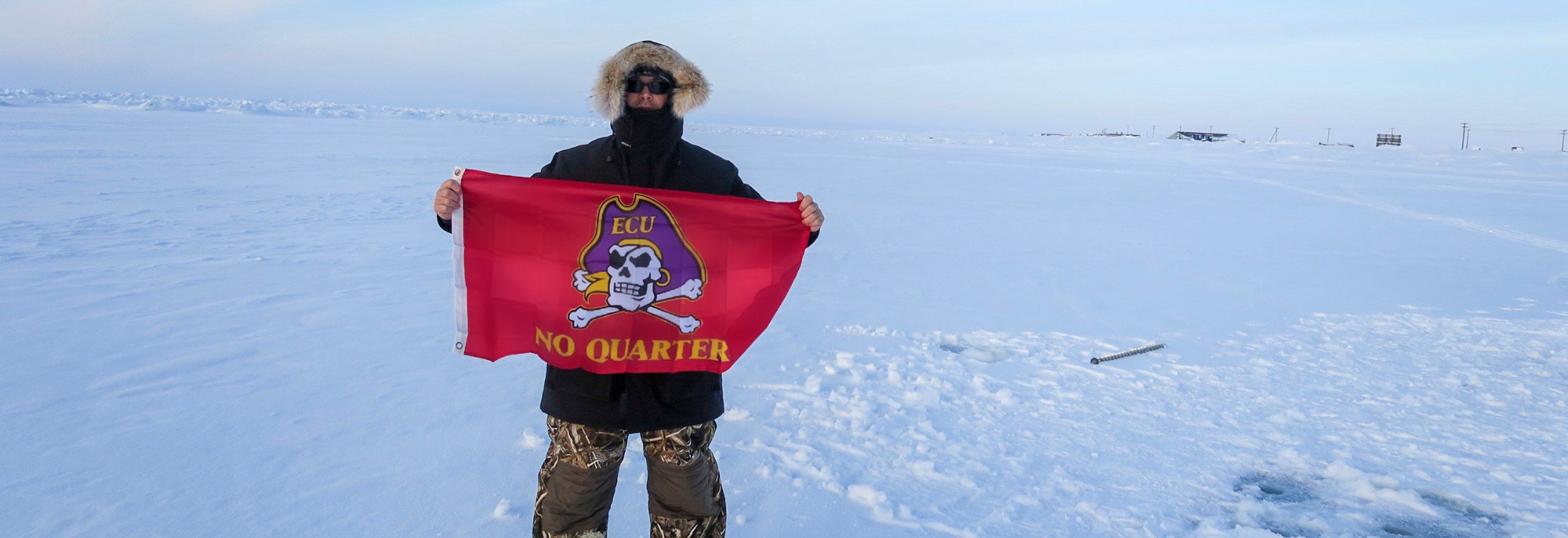Students build arctic snow sensor
Changes seen in the Arctic climate have an impact on the frequency and intensity of hurricanes experienced in eastern North Carolina.
That is why Dan Dickerson, an ECU science education professor and STEM CoRE coordinator, traveled to Utqiagvik – the northernmost city in Alaska – March 30 through April 6 to help researchers collect data and test a snow sensor prototype developed by ECU engineering students.
Dickerson and a small team of researchers from Old Dominion University, the University of Washington and the National Oceanic and Atmospheric Administration braved temperatures as low as minus-15 degrees Fahrenheit to deploy sensors to measure everything from melting snow to the conditions in the atmosphere in an effort to better understand the changing climate. The information will help scientists with weather forecasting and modeling.
He said the most rewarding part of the trip was when the snow sensor light came on and data started rolling in. The engineering students had taken Dickerson’s idea and made it into a sensor that measures melting snow atop and beneath the snow. The data it collects will be combined with information from other types of sensors to give a more complete picture of how quickly snow and ice are breaking apart.
Now that Dickerson has seen firsthand what the conditions are like, students can design a new sensor better suited for the environment; for example, making one that’s easier to adjust with thick gloves on and masking it from bears that might mistake the sensor for a toy.
NBC “Today” show meteorologist Al Roker was also there and interviewed team members for live segments dealing with climate change and how it is affecting residents of the northernmost city in the United States.
Dickerson hopes to go on another trip to an area where he can deploy the updated version of the sensors. In the meantime, he said the success of this collaboration will lead to more work in the area of climate change.
